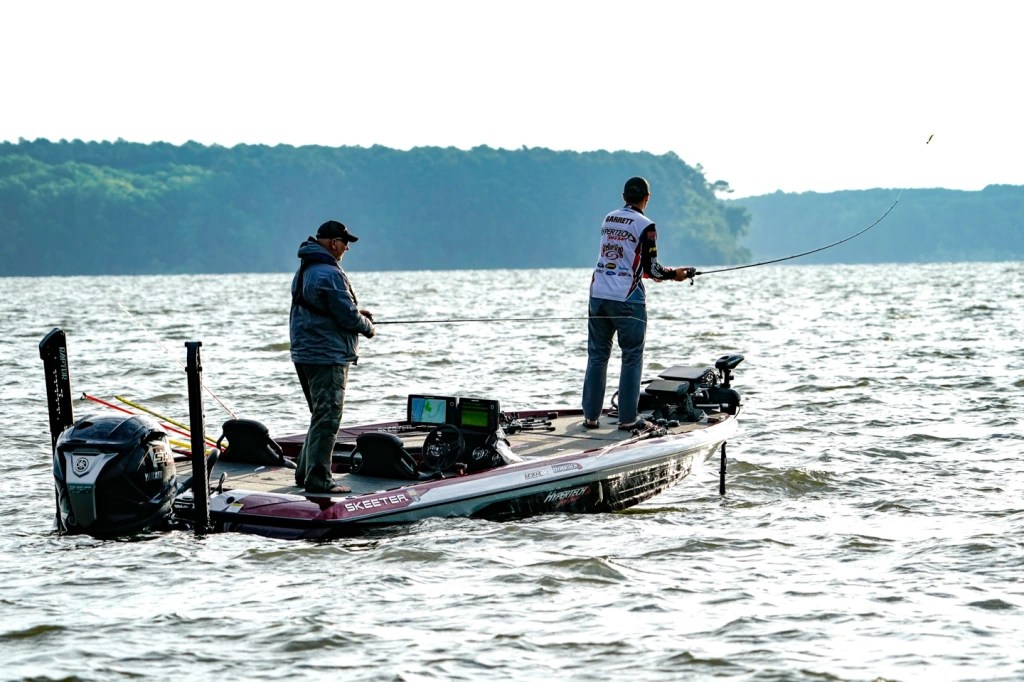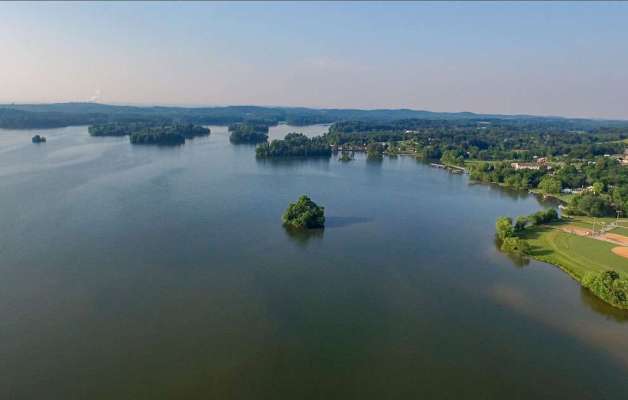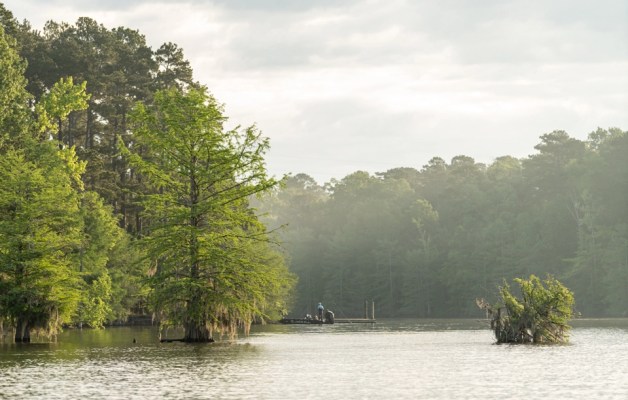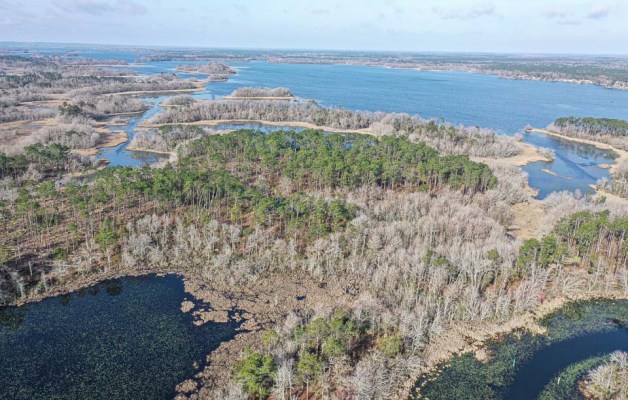
Call Wheeler Lake the silent sleeper of the chain of lakes flowing through the Tennessee River valley in northern Alabama. Wheeler’s next-door neighbor to the east is Guntersville, and at the far end of the state is Pickwick, both lakes known for some of the best largemouth (Guntersville) and smallmouth (Pickwick) fishing in the nation.
That means Wheeler gets less fishing pressure than its neighbors, beckoning the call of anglers seeking the same. The even better news is that Wheeler has many of the same bass-attracting qualities of its better-known neighbors, namely ledges, flats and bars lining and connecting to the Tennessee River channel. Find largemouth stacked up on the ledges during summer, before they migrate into creek channels and bays to spawn.
Probably nowhere else does that socially-driven bass fishing phenomenon occur on the Tennessee River than an area known as the Decatur Flats, covering a section of Wheeler from the Interstate 65 bridge to near TVA’s Browns Ferry Nuclear Plant. During its early 2000’s heyday, aquatic vegetation flourished on the expansive flat running through the middle of the river channel. Call it a mega-ledge that defines the river’s legendary summertime ledge fishing, with grass, baitfish, mussel beds and adjacent creek channels for spawning. The Decatur Flats had it all. Today, the vegetation is mostly gone, but all the other necessary ingredients are still there, along with the usual crowd of boats and anglers, all vying for the specific sweet spots that attract quality largemouth.
On the Tennessee River, current generation is the leading cause of success for summertime bass fishing. The river is a continuous series of locks and dams designed for commerce and power generation, with the latter operation creating the ideal (or not) conditions for bass anglers. Baitfish movement caused by current stimulates feeding opportunities, as the bass stage behind underwater current breaks function as ambush points. Without TVA-generated current, they suspend and scatter about the ledges, tough to pattern during the downtime. That means taking into consideration the tailwater generation of the dam at the uppermost end, and equating that to the current flowing into the next lake below.
For visiting anglers, Wheeler is best broken down into four sections, beginning with the tailrace below Guntersville Dam. As Tennessee River tailraces, this one is smaller and very dependent on the water release schedule. Second is a riverine stretch that extends to the Interstate 65 bridge at Decatur. The banks provide current breaks with isolated rock and wood, while there are backwaters, including the fishable section of Wheeler National Wildlife Refuge. Next is the Decatur Flats and lastly is the Elk River, with a long, meandering channel with shoreline laydowns and other key spawning transition areas.
Lay of the lake: Wheeler is the second of four northern Alabama impoundments on the Tennessee River. In order those are Guntersville, Wheeler, Wilson and Pickwick lakes. Wheeler runs 60 miles and fills 69,700-acres between Guntersville and Wheeler dam. Its key tributary is the Elk River, flowing into the north shore from southern middle Tennessee.
Trivia: B.A.S.S. legend Tommy Martin won the 1974 Bassmaster Classic on Wheeler Lake, with a three-day total of 33 pounds 7 ounces.
Where to stay: Joe Wheeler State Park, on the lower end, has a resort lodge, full-service restaurant and marina, and campground. You’ll also find boat-trailer friendly hotels in Decatur.
Marinas and ramps: Ingalls Harbor is a tournament-designed venue with a 10-lane simultaneous launch ramp, and 158 truck and trailer parking spaces with additional parking for 107 cars. A 1,088-linear-foot floating dock is located at the ramp. Adjacent space is available for weigh-ins. There’s a special events pavilion and Hilton Home2 Suites on the property.
Good eats: Big Bob Gibson’s





